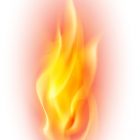Conversations
Recreational hunting in Alberta: UNSURE AS SHOOTING
BY TRACEY L. ANDERSON
September, 2016
Alberta is rich in natural beauty and diverse wildlife. People have hunted on this land since ancient times when hunting was necessary for living. Since then, through the hunting and trapping era of European settlers and into modern times, hunting has changed. So have our attitudes towards it.
Today, the issues surrounding recreational hunting, such as poaching, trophy hunting, baiting and spear hunting, often prompt fierce debate. The debate is complex, in part, because some people have difficulty reconciling their personal beliefs and values with what the law allows. A closer look at these issues may make it easier to see the forest animals through the trees.
Hunting Attitudes in Alberta
The Hunting for Tomorrow Foundation sponsored a survey about attitudes toward hunting in Alberta in 2001. The survey, conducted by Banister Research & Consulting Inc., noted the following:
62% of respondents agreed that hunting is a part of Alberta’s culture and heritage.
70% reported a very or somewhat favourable attitude toward hunting; most believe it helps control wildlife populations.
28% were somewhat or very unfavourable toward hunting; they think it’s unnecessary, or they don’t condone it.
12% did not agree that hunters are ethical and responsible.
34% said they hunted in the past, and 66% said they had not. Of the latter group, 66% had no desire to hunt, and 17% don’t believe in killing animals.
Regulations & Enforcement
The Government of Alberta Ministry of Environment and Parks establishes hunting rules, such as hunting seasons, licensing guidelines and education requirements, in consultation with the Alberta Fish and Game Association and other conservation organizations. Hunters are responsible for understanding and following the rules that govern their hunting activities. The rules are complex and sometimes change, so hunters should stay informed. Specific rules for all types of recreational hunting are available at albertaregulations.ca/huntingregs/.
Fish and Wildlife Officers are responsible for enforcing Alberta’s hunting rules. Any practice that violates these rules, such as hunting without a licence, outside of the specified season or with restricted weapons, is classified as poaching. Poaching is chargeable under the Wildlife Act. Convictions can result in fines up to $100 000, jail sentences up to two years and loss of equipment used in poaching. To combat the growing poaching problem, Fish and Wildlife Officers use patrols, vehicle inspections and hunter interviews. They also rely on tips from hunters and other concerned citizens to the Report a Poacher program.
Since 1996, Dave Paplawski has been the Conservation Education Coordinator with the Alberta Hunter Education Instructors’ Association (AHEIA), an organization of about 20 staff and 1500 volunteer instructors who deliver hunting, fishing and other conservation-based education programs. Paplawski, an avid hunter for more than 45 years, says, “Poachers are not hunters, and society needs to see them that way.”
Licences & Hunter Education
Alberta’s minimum hunting age is 12; hunters under 16 require written parental or guardian permission to buy a licence. All hunters must have a Wildlife Identification Number (WIN) before purchasing a licence. Licence requirements and costs vary by type. In the 2015/16 hunting season, licence and WIN card sales brought in $18.8M. Some goes to the government, but many people are unaware—and might be surprised to learn—that most of the money funds the Alberta Conservation Association. Paplawski says, “Hunters are the number one financial supporter of wildlife conservation in Alberta.”
To qualify for a WIN card, hunters must complete a hunter education program and pass an exam. AHEIA’s 30 hours of instruction focus on safety and procedures with topics that include hunting ethics, legal responsibilities, firearms, wildlife management, first aid and survival.
Phil Ficht, a hunter for fifty years, is the Secretary Treasurer of the St. Albert and District Fish and Game Association, a 60-member group that believes in the “conservation and wise use of our natural resources in Alberta.” He believes the education requirement promotes safety by ensuring that hunters understand safe practices for their protection and that of others enjoying the woods. He wants to see the testing procedure changed, though, because he thinks the test’s availability online makes it possible for someone else to complete it.
Wildlife Management & Conservation
Some opponents believe hunting no longer serves a purpose. For example, in the 2001 aforementioned survey, 28% of respondents had an unfavourable view of hunting. Of those, 25% felt it wasn’t necessary for people to hunt in general, and 12% felt it wasn’t necessary to hunt as a source of meat.
In contrast, the sport’s proponents believe its modern purpose is to assist wildlife management and conservation through closed hunting seasons and lottery draws. In the draw system, when hunting demand is too high for a species, such as antlered mule deer, interested hunters must apply for a limited number of special licences. Only lottery winners can hunt that species in a specific area and season.
Ficht says that lottery draws and hunting seasons ensure that “animals and birds are not hunted too heavily so that there are not sustainable populations left for breeding […] in some areas, wildlife populations can overpopulate their habitat, and hunting can assist in harvesting the surplus animals.” Together, these aspects of hunting ensure that “animal populations are maintained at a sustainable level for their future survival.”
Controlling Chronic Wasting Disease
Chronic wasting disease (CWD) is a fatal disease that affects the neurological system of hooved animals such as deer and elk, causing weight loss and behavior changes. The disease is rapidly spreading from eastern Alberta into other areas, and it’s difficult to eliminate. In affected areas, hunters assist with CWD surveillance by registering heads of deer they kill for disease testing and by indicating the hunting site’s geographic coordinates. According to Alberta Environment and Parks, the information helps to determine the geographic boundaries, magnitude, and spread rate of the disease in Alberta and supports research done in conjunction with the University of Alberta. The government also allows extra deer licences in affected regions; in theory, fewer animals in an area can inhibit the disease’s spread.
In its 2015 policy statement on CWD, however, the Alberta Wilderness Association raises concerns. “While hunters may submit heads for CWD testing, they will be leaving gut piles and bones in the field where CWD may be passed on to wildlife through direct contact or contact with contaminated soils. Hunters may also transport contaminated carcasses and thus introduce CWD to clean sites.” The association fears hunters could potentially spread the disease rather than stop it. To back up this assertion, they point to American hunter-based deer eradication programs in CWD areas, where no infection decreases are evident.
Trophy Hunting
Paplawski explains that to some people, the phrase “trophy hunting” conjures images of “shooting a big trophy animal for its horns, antlers or skull and leaving the rest in the forest [but] this is so untrue. All [Alberta] hunters must use all the edible parts of all the wildlife they take, whether it’s a ‘trophy’ size or normal size.” Trophy size refers to large animals with large antlers or horns; because these animals tend to be older and more experienced at surviving in the wilderness, “they are generally ‘smarter’ than the younger animals so are very difficult to find or hunt.” This challenge makes these animals highly prized by hunters.
Specifically targeting a larger animal, often to compete with other hunters, offends many people; however, Paplawski explains that hunters often “select only a trophy size -[animal] and pass up dozens of [other] legal animals they could have taken.” This approach reduces the number of animals hunted and spares smaller, younger animals.
Fair Chase & the Baiting Debate
Baiting is luring animals to an area with salt or food so that they can be hunted more easily. Opponents of this highly provocative practice—including many hunters—believe it removes the important element of “fair chase.”
The fair chase concept was developed by the Boone and Crockett Club, North America’s oldest conservation organization, founded in the United States in 1887. Today many -hunters consider it a leading authority on conservation and big-game hunting. The club’s June 2016 position statement on fair chase defines it as “the ethical, sportsmanlike, and lawful pursuit and taking of any free-ranging wild, native North American big game animal in a manner that does not give the hunter an improper advantage…. By not overwhelming game species with human capabilities, fair chase helps define a hunter’s engagement in conservation.”
Phil Ficht believes, “all wildlife should be harvested by being found in their natural habitat and harvested by stalking—whether hunting with a bow or a rifle—and not be attracted to a certain area by bait… personally I do not believe in baiting any wildlife.”
In Alberta, hunters can only bait black bears according to specific guidelines; baiting other animals is illegal. According to My Wild Alberta, black bear baiting “allows hunters to be more selective in choosing a bear to harvest, creates close-range shot opport-unities for a more humane harvest and helps to ensure that females with cubs are not killed.”
Grizzly Bear Hunting
Grizzly bears have been designated a threatened species under Alberta’s Wildlife Act, so a moratorium on hunting them has been in effect since 2006. Paplawski says, “The government implemented the moratorium until they could determine what actually is the population. They are still in that process. Estimating bear populations is not an exact science.” According to the Species at Risk 2012–13 Recovery Action Summary on grizzlies, the June 2013 population estimate is about 700 bears, which is considered small. Paplawski says that “the moratorium will be lifted when they determine population is high enough to allow for a harvest.”
Spear Hunting
A recent video that showed an American hunter spearing a bear in Alberta created intense controversy and led to calls for the government to ban spear hunting as unethical and dangerous. Roland Lines, Communications Manager of the Alberta Society for the Prevention of Cruelty to Animals (Alberta SPCA) says that the organization’s staff “were disturbed by the hunter’s apparent view that killing an animal is a form of entertainment. The use of cameras to record the event, one of which was attached to the spear beforehand, and then posting the video online demonstrate his desire to promote himself through the killing of the bear.”
Paplawski says, “The hunter and the people around him were put in a very dangerous situation with the method he chose to hunt that bear. He had no protection, firearm or pepper spray for all of them. Standing on the ground with a bear over a food source with no protection is not something we would teach in a hunter safety program.” As for spear hunting in general, though, he says, “Think about our ancestors and early societies. They used spears and other things to kill their food. It was acceptable then and is still done in other parts of our world right now and [is] acceptable in those societies.”
Ficht takes a stronger stance. “Spear hunting should be banned, and if I expressed my opinion of the hunter’s conduct in the video, it would be unprintable.”
Is Hunting Humane?
Much of the debate over hunting as a sport revolves around one central question: is hunting humane? Each individual’s answer is based on personal beliefs and values; however, Alberta has authorities and acts in place that govern the treatment of animals. One such authority is the Alberta SPCA, which was established in 1959 to “protect, promote and enhance the well-being of animals in Alberta.”
In 1967, the organization helped develop the Animal Protection Act of Alberta, respected as one of Canada’s best. The Act focuses on owned animals under people’s care with no specific provisions about hunting. The Alberta SPCA enforces the Act, and Roland Lines says that as an enforcement agency, it “doesn’t take a general position on activities that are legal in Alberta. In the event that we were called to investigate a hunting incident, our peace officers would conduct their investigation based on the particular circumstances of the case.”
At the heart of most arguments against recreational hunting is the deeply held belief that hunting is inhumane. For example, in the 2001 survey, 24% of respondents believe killing animals for enjoyment is cruel. Lines notes, however, that “the Alberta SPCA believes that animals should be treated humanely through all stages of their lives, including their deaths. Although we typically deal with… animal euthanasia or slaughter, the expectation for a humane death can also be applied to hunting. In appropriate conditions, a skilled hunter can cause a humane death in an animal with a minimum of fear, pain and distress.”
Common Ground
After a deeper look into the rules and guidelines related to hunting in Alberta, it’s clear that the government and conservation groups have made many efforts to regulate and monitor hunting and other outdoor activities to ensure that all Albertans respect and guard our natural treasures. As Ficht explains, “Hunting is a legal pastime in Alberta and has been for many years; ethical hunters ensure animals are harvested as painlessly as possible and are respected before and after their demise.”
Although disagreements occur about many aspects of recreational hunting, both sides agree that Alberta’s wilderness is vibrant and that humans have a responsibility to help it stay viable. t8n
Land Use
Public land, also called crown land, is owned by the Alberta government. Private land is owned or leased by people. Hunters need landowner permission to access private land; the landowner has the right to deny access for any reason. Hunters can access most public land, including some parks, but they should confirm whether hunting is allowed on the land where they wish to hunt.
“Poachers are not hunters, and society needs to see them that way.”
–Dave Paplawski, Conservation Education Coordinator with the Alberta Hunter Education Instructors’ Association
Report a Poacher
If you witness or suspect illegal hunting activity or see a wildlife emergency, call Report a Poacher toll-free 24 hours a day at 1-800-642-3800.













